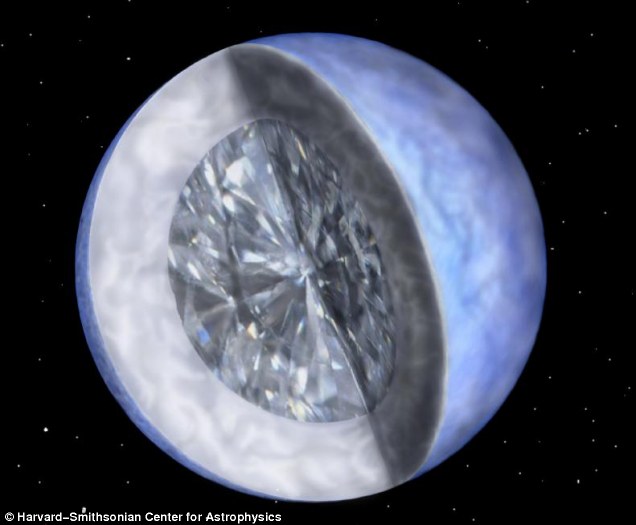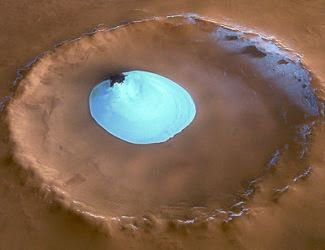Home » Astronomy
Most mysterious star discovered in Constellation Leo
Astrophysicists of Germany, France and Italy have discovered a very old star in the constellation of Leo, whose existence is a complete mystery to them. SDSS J102915 +172927, unlike other stars of the “same age” that appeared immediately after the Big Bang, has a smaller mass, which does not fit into the framework of the modern theory of star formation.
The age of the star SDSS J102915...
CERN: The Sun Causes Global Warming
As the coldest summer in Britain for 18 years draws to a close, a new study by the European Organization for Nuclear Research (CERN) has again pointed to the conclusion that the Sun’s cosmic rays, and their role in cloud formation, rather than man-made emissions, are responsible for the Earth’s changing temperatures.
Climate realist and author Lawrence Solomon explains the results of CERN’s...
Scientist simulate Milky Way creation
A photo of the Milky Way galaxy
Scientists at the University of Zurich in Switzerland say they have created the world’s first realistic simulation of the formation of the Milky Way.
Astrophysicists from the University of Zurich working with astronomers at the University of California maintain that their recent video simulation of the Milky Way shows the creation of our galaxy less than a million...
Scientists discover diamond planet
Twinkle, twinkle little star: The diamond planet - the shrunken core of a once-huge star - is a chunk of crystallised carbon measuring 40,000 miles across, five times the diameter of Earth.
It is certainly what you could call a gem of a discovery.
Astronomers believe they have found an entire planet made of diamonds.
Scientists at the University of Manchester think they have unearthed a once-massive...
Brightest supernova in 40 years appears
Berkeley scientists this week discovered a new supernova, closer to Earth than any seen in the last 40 years, and believe they’ve spotted it within hours of its explosion.
Astronomers are now scrambling to observe it with as many telescopes as possible, including the Hubble Space Telescope, and it’s likely to remain a major target for research for the next decade or more.
Dubbed PTF 11kly,...
Russian spaceship fails to reach orbit
The cargo vehicle was set to blast off to the International Space Station on August 24, 2011.
NASA says the Russian robot spaceship which was carrying supplies to the International Space Station (ISS) has failed to reach its destination.
The Progress 44 cargo spaceship was set to blast off on a Russian-built Soyuz rocket at 9 am of August 24 from the central Asian spaceport of Baikonur Cosmodrome in...
The mystery of Comet Elenin
Astronomers and other outer space experts are speaking out on a comet expected to make a close call with colliding into Earth later this year. The consequences could be dire, so why are so many people unaware of it?
“I think it’s worth a raised eyebrow” says author Brooks Agnew. He’s done a lot of research on Elenin and tells RT that there are some rather strange coincidences regarding the...
Astronomy Event discusses the origin of the universe
Duília de Mello, Brazilian researcher at NASA, will talk about blue bubbles, isolated stars outside of galaxies.
Rio is again the scene of debates on the latest discoveries in astronomy from the workshop of the series “The Evolving Universe”, PUC-Rio, that from 15-19 August will feature more than 40 lectures by researchers from South America, the U.S. and Europe. The event was conceived...
Darkest planet found: Coal-Black
The newfound gas-giant planet TrES-2b is black with a slight red glow, experts estimate.
Scientists have discovered a Jupiter-size gas giant planet in our galaxy, dubbed Coal-Black planet, as the darkest world in the universe, which reflects almost no light.
Researchers indicate that the inky planet absorbs 99% of the light its star sends its way and reflects only one percent of the light that strikes...
Life on Mars no surprise
Mars’s Icy North Pole
There’s a good explanation for why life may exist on Mars. In the Earth’s past there was powerful volcanic activity which could have easily spewed dirt and rocks containing microbes into outer space which not only could have eventually reached Mars but also ended up traveling in orbit through space that we now know as meteors. A Newsweek article of September...
NASA's Jupiter probe blasts off
NASA’s Juno robotic probe has started its journey to the heart of Jupiter to gather detailed information about how our solar system is formed.
The Atlas 5 rocket carrying the spacecraft blasted off from Cape Canaveral Air Force Station at 12:25 p.m. (1625 GMT) Friday with an almost one hour delay, Reuters reported.
“Next stop is Jupiter,” head of the Juno science team Scott Bolton...
Photos show sign of liquid water on Mars
A sequence of new photographs released by the Mars Reconnaissance Orbiter show evidence of flowing, liquid water on the mountains of the Red Planet.
According to the report published in the journal Science, the images show long, dark “tendrils” a few meters wide, the BBC reported.
The flowing water can be seen between rocky outcrops flowing hundreds of meters down steep slopes towards...
Oxygen spotted in constellation Orion
The Herschel space telescope has for the first time discovered molecular oxygen in a star-forming region of the constellation of Orion.
While single atoms of oxygen have been found alone or incorporated into other molecules, the oxygen moleculeس had never been seen in space so far, the BBC reported.
Although oxygen is the third most abundant element in the cosmos, its molecular form that makes life...
NASA to send robotic probe to Jupiter
The planet Jupiter is seen in this image released by NASA on November 24, 2010, which is a composite of three-color images taken on November 18, 2010 by the Gemini North telescope in Hawaii.
The National Aeronautics and Space Administration (NASA) is preparing to send its robotic probe on an unprecedented mission to the heart of Jupiter.
Juno was hoisted aboard an unmanned Atlas 5 rocket at Cape Canaveral...
Galaxy Catastrophe and Human Evolution
A group of American astrophysicists led by Alberto Cezanne came to the conclusion that some “mysterious” phenomena that occur in our galaxy are associated with the cosmic catastrophe that occurred ten million years ago. Then, the scientists say, the Milky Way collided with a dwarf galaxy the center of which was a massive black hole.
For example, it is difficult to explain too high rate...

























